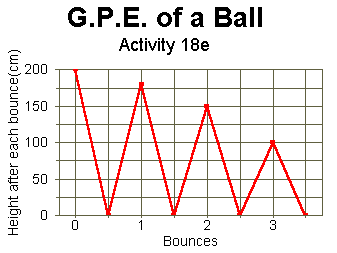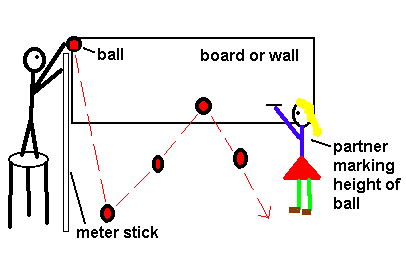
TITLE OF ACTIVITY
Presented to
Mrs. N. Dupuis
Student Name
Block
Reynolds Secondary School
Date due
TABLE OF CONTENTS
Introduction 1
Objective 2
Prediction 2
Materials 3
Procedure 3
Precautions 3
Illustrations 4
Calculations 5
OBSERVATIONS:
Table 6
Graphs 7
Discussion Questions 8
Reference List 9
i
(Here, you describe the topic of your activity. Whether the activity is on energy transformations of bouncing balls, identifying rocks and minerals or electric meters in your home, you might want to read the pages preceding the activity and summarize with definitions, facts, and findings. **Your introduction should not be personalized, i.e. include statements like "I will do my activity (or project) on... You will like my report... I did this, I did that..." **Have at least 10 good sentences, and/or 3 paragraphs. Remember to double space where possible, throughout your whole report. If in doubt, double space. ) Please see the following example of a student Introduction. You may borrow parts of it for 5 points.
There are two different types of energy: potential and kinetic. Potential energy is stored energy. Gravitational potential energy (GPE) can be stored in a ball held in the air or in the water held back by a dam. In both cases, the ball and the water have the 'potential' to create energy when released. Gravity will act on the ball and the water. Potential energy can also be chemical as in fireworks or elastic as in a rubber band or a bouncing ball which hits the floor. Kinetic energy is energy of motion.
Energy transformation is when energy changes from one form to another. A falling ball goes through many energy transformations. It goes from gravitational potential energy to mechanical (kinetic) energy; hits the floor, bounces due to elastic energy, moving up with mechanical energy with gravity working on it till it reaches a moment of GPE and back down again.
The law of conservation of energy states that: "Energy can neither be created nor destroyed; it can only change form." The ball in this activity should lose some of its GPE to different forms of energy, mostly wasted energy.
1) I will
determine the percentage of the ball's gravitational potential energy regained
after each bounce (Extension p398).
2) I will
also try to identify the different energy transformations that take place
when a ball is dropped to the floor.
PREDICTION
1) I predict
that the ball will regain ___ % of its gravitational potential energy.
2) The
energy transformations that take place when the ball is dropped to the
floor are
_______, _________, ___________
pen, paper, metric stick, super ball, chalk
PROCEDURE
1. I allowed
the ball to fall from a height of 200 cm.... (put in your own
words the
Procedure on pages 397 and 398.)
PRECAUTIONS
I am to DROP the ball, allow
it to fall from a height of 200 cm. I can NOT throw the
ball or create it to bounce
higher than 200 cm. This may injure a classmate...

remembertocolour,
shade in
or highlighttomakeitalittlecolourful!!
CALCULATIONS
To calculate the % of gravitational
potential energy that the ball regains after each bounce,
we must use the following
calculation:
(average height after bounce
1/ height before bounce 1) X 100% = % GPE of bounce 1
therefore:
180cm/200cm X100 = 90%
(Numbers
in red are for illustration purposes - will not be your actual readings...)
(average height after bounce
2/ average height before bounce 2) X 100% = % GPE of bounce 2
therefore:
150cm/180 cm
X 100 = 83%
(averag height after bounce
3/average height before bounce 3) X 100% = % GPE of bounce 3
therefore: 100 cm/ 150cm
X 100 = 67%
OBSERVATIONS
Numbers
in red are for illustration purposes - will not be your actual readings...
The
3 trials are done to get a good average height. You will use the
AVERAGE
height
for calculations of G.P.E.
|
|
|
|
|
|
|
|
|
|
|
|
|
|
|
|
|
|
|
|
|
|
|
|
|
|
|
|
|
|
|
|
|
|
|
GRAPHIQUE

Discussion Questions p 398 # 1,2,3
1. .............
2.
3.
Beckett, Peter et al. Science Probe 09. Scarborough, Ontario.
@ Nelson Canada, 1995. Pages 396 - 398.
Dupuis, Nicole. "09Act18e," http://dupuis.shawbiz.ca/school.htm